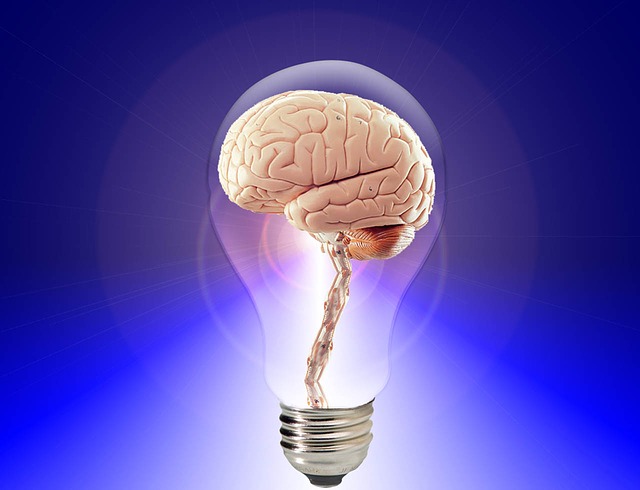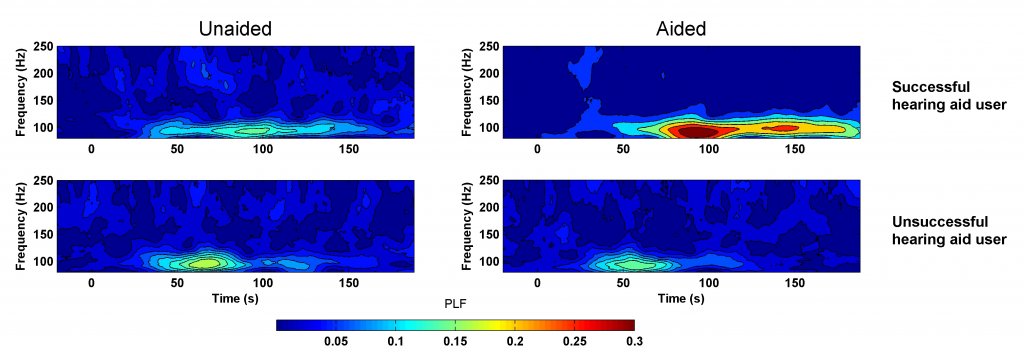Mysteries of the Hearing Brain
The Mysteries of the Hearing Brain
The audiologist may view every new patient as a potentially interesting mystery, waiting to be solved. Even a seemingly routine diagnosis of presbycusis does not always provide an adequate explanation for the nature of the hearing difficulties presented by some patients. After twenty-six years of audiological practice, Dr. Samira Anderson decided to pursue better approaches or tools to uncovering mysteries of hearing difficulties that are not apparent on the audiogram, and she obtained a PhD in Auditory Neuroscience. In this new column she aims to connect recent research advances to clinical practice. Her research continues to be driven by her clinical experiences, and she invites readers to submit their questions or experiences for potential future articles.

Why do some people do so well with hearing aids, while other continue to struggle? My 82-year-old mother wears hearing aids and hears extremely well with them. She is the dream patient that every audiologist wishes for. She has worn several different models of hearing aids over the last 15 years and she has done well with all of them. She has never required adjustments following the initial fitting with real-ear measurement, other than occasional increases in gain when her hearing has decreased. When I am with her, I am hardly aware of her hearing loss, even in noisy backgrounds. Last year we attended my daughter’s wedding in Kolkata, India. The noise at the party the night before the wedding was intense, and I could hardly understand what was said. Yet, my mother was able to carry on a conversation with a variety of people with seeming ease! She a mild-to-moderate relatively flat sensorineural hearing loss and good word recognition scores, so one may assume that these factors are the reasons that she performs so well with her hearing aids. But, I have seen many patients with similar audiometric profiles who have been extremely challenging, requiring seemingly endless follow-up visits and adjustments. So, it is a mystery to me why people with identical audiograms can experience such vastly different outcomes with their hearing aids.
Several studies have investigated the factors that are associated with successful hearing aid use, but few have investigated neural processing variables that may contribute to success. We know that aging and hearing loss can affect the fidelity of speech signals as they are transmitted to the brain. The degrading effects of noise on neural transmission are more pronounced in older adults than in younger adults, even in the absence of hearing loss.1 And, hearing loss can result in exaggerated response amplitudes in the midbrain or cortex, which might explain why older adults often complain that speech is loud but unclear.2,3 These consequences of aging and hearing loss can affect an individual’s ability to benefit from hearing aids.
My lab is interested in using evoked potentials as a tool to investigate effects of amplification on neural speech processing. We expect that in the future, this information can be used in designing more effective hearing aid algorithms or in recommending specific parameter settings for individual hearing aid fittings. We use the frequency following response (FFR), a scalp-recorded measure of neural activity that preserves the timing and frequency aspects of the stimulus, and the cortical auditory-evoked potential (CAEP), an abstract representation of the speech signal that arises from the primary auditory cortex.
In our initial study, FFRs and CAEPs were recorded to evaluate effects of amplification on neural processing of a speech syllable /ga/.4 Thirty-seven participants with mild-to-moderate sensorineural hearing loss who had never worn hearing aids were fit with Widex Dream 440 Fusion hearing aids, using real-ear measurement to match NAL-N2 targets. The participants in this study were followed over the course of six months and were asked to wear their hearing aids for a minimum of eight hours a day. At the end of the study they were given the option of paying for the hearing aids at a reduced price or returning them.
At the time of initial fitting, FFRs revealed that amplification improved phase locking and decreased latencies in the consonant-to-vowel transition region of the speech syllable. CAEPs revealed increased amplitudes and earlier latencies in the earlier peaks (P1 and N1) in amplified vs. unamplified testing conditions. However, these effects were only seen when the /ga/ syllable was presented in quiet conditions, and no effects of amplification were noted when the syllable was presented in background noise. Previous studies have shown that older adults vary in the degree to which their responses are affected by noise. Furthermore, greater degrees of noise degradation relate to high speech-in-noise thresholds (worse performance) on the Hearing in Noise Test.5 So, the lack of hearing aid effects on neural processing in the noise condition, may be due to greater individuality in participant responses.
In Figure 1, unaided and aided phase locking in the noise condition is displayed for two individual participants who have similar mild-to-moderate hearing losses. The phase-locking analysis evaluates inter-trial phase consistency in the FFR. Greater degrees of phase consistency indicate more precise or faithful representation of the speech stimulus. The two participants in Figure 1 were defined as successful or unsuccessful based on final outcomes of the study. Participants who reported that the hearing aids helped them in a variety of situations and who decided to keep their hearing aids were considered to be successful hearing aid users. The unsuccessful hearing aid users generally complained about hearing aid performance in noise and chose not to keep their hearing aids. Figure 1 shows that amplification increased phase locking in the successful hearing aid user, but no changes were noted in the unsuccessful hearing aid user.

Figure 1. compares the phase-locking factor (PLF) recorded in unaided and aided listening conditions in individuals who were successful or unsuccessful hearing aid users. Higher PLF is represented by hotter (red) colours). In both participants, phase locking is noted in the 100 Hz frequency region, which corresponds to the fundamental frequency of the stimulus. The time region on x-axis corresponds to 170-ms duration of the syllable.
It should be noted that the majority of participants (86%) chose to keep their hearing aids, even though they were recruited from the general public rather than from a clinic population seeking help for hearing loss. Therefore, the study showed overall positive effects of amplification. But, an analysis of individual difference in evoked potentials may reveal factors that underlie less favourable outcomes. Future studies will extend our investigation of amplification by focusing on the effects of specific hearing aid manipulations, such as noise reduction and amplification compression.
References
- Presacco A, Simon JZ, and Anderson S. Evidence of degraded representation of speech in noise, in the aging midbrain and cortex. J Neurophysiol 2016;116(5):2346–55.
- Anderson S et al. Effects of hearing loss on the subcortical representation of speech cues. J Acoust Soc Amer 2013;133(5):3030–38.
- Alain C, Roye A and Salloum C. Effects of age-related hearing loss and background noise on neuromagnetic activity from auditory cortex. Frontier Syst Neurosci 2014;8:8.
- Jenkins KA, et al. Effects of amplification on neural phase locking, amplitude, and latency to a speech syllable. Ear Hear 2017.
- Anderson S, et al. A neural basis of speech-in-noise perception in older adults. Ear Hear 2011;32(6):750–57.

